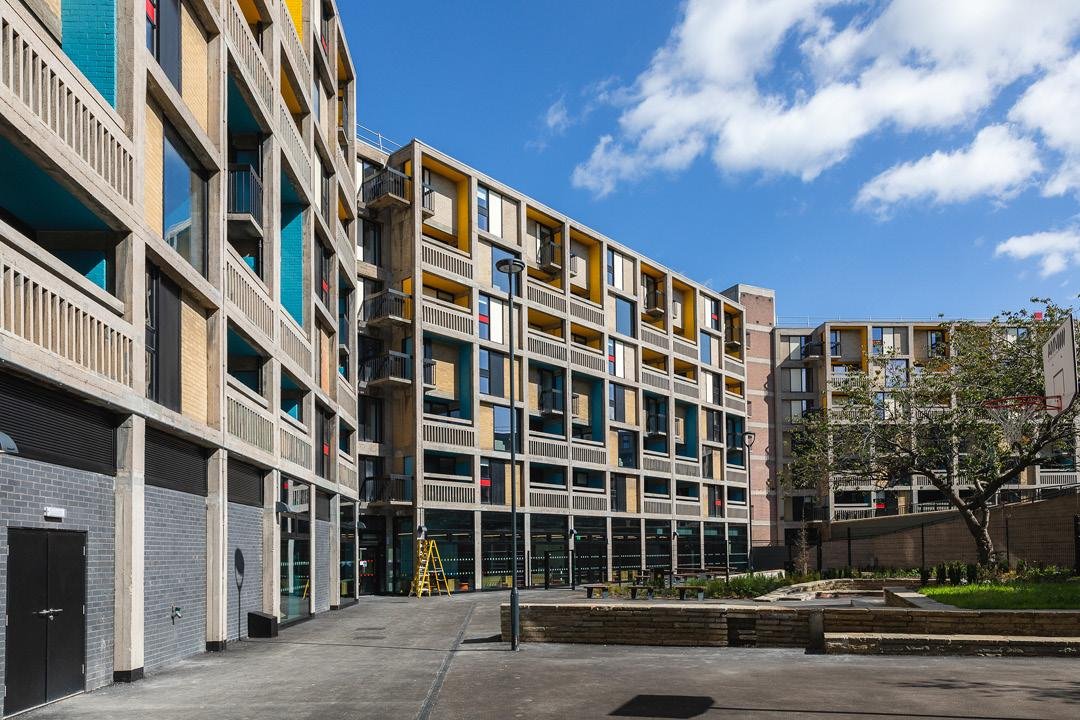Reuse of existing Buildings (adaptive reuse)
Reuse of existing buildings (Adaptive reuse)
The current situation
Current use of buildings and their associated construction has been estimated to account for nearly 40% of energy-related (CO2) emissions and the construction, demolition and excavations sector account for 62% of the total waste generated in the UK.
Buildings are currently responsible for 39% of global energy related carbon emissions: 28% from operational emissions, from energy needed to heat, cool and power them, and the remaining 11% from materials and construction. It is estimated that around 50,000 buildings in the UK are demolished annually.
Towards the middle of the century, as the world’s population approaches 10 billion, the global building stock is expected to double in size. Carbon emissions released before the built asset is used, what is referred to as ‘upfront carbon’, will be responsible for half of the entire carbon footprint of new construction between now and 2050, threatening to consume a large part of our remaining carbon budget.
Therefor the built environment sector has a vital role to play in responding to the climate emergency, and addressing upfront carbon is a critical and urgent focus.
In “Bringing Embodied Carbon Upfront: Coordinated action for the building and construction sector to tackle embodied carbon”, World GBC has issued a bold new vision that:
By 2030, all new buildings, infrastructure and renovations will have at least 40% less embodied carbon with significant upfront carbon reduction, and all new buildings are net zero operational carbon.
By 2050, new buildings, infrastructure and renovations will have net zero embodied carbon, and all buildings, including existing buildings must be net zero operational carbon.
Bringing Embodied Carbon Upfront report (world green building council)
How we can improve
This can be improved dramatically by reusing existing buildings by following the approaches below
1. Designing for disassembly
2. Repurposing existing buildings
Item 1 is covered in our summary for ‘designing for disassembly’ in a separate blog article.
Item 2 has been done for many years but can be expanded and refocused on ‘upgrading existing buildings’ for extended use as a more carbon efficient alternative to demolition and new build, whenever there is a viable choice’. Such an expanded approach would champion creative and adaptive reuse of existing building and not just buildings of heritage interest.
Building recycling through the repurposing and/or renovation of existing buildings or structures, will be a growing solution for achieving a low-carbon future. With new technologies and advances in design and construction techniques, the retrofitting of a building will become a more viable and credible alternative to demolition and new build.
Beton House Student Accommodation in Sheffield
An exemplary case of adaptive reuse unfolded in Sheffield with the transformation of the iconic Park Hill Estate, a brutalist architectural gem, into a vibrant student housing complex known as Béton House in 2020. This remarkable endeavour, overseen by the talented team at Whittam Cox Architects, not only breathed new life into the Grade II*-listed complex but also paid homage to its historic roots.
Copyright - Sheffield Hallam University
The result is a harmonious fusion of brutalist aesthetics and contemporary functionality. What's remarkable is that, amidst the transformation, the core essence of the structure envisioned by architects Jack Lynn and Ivor remained largely intact.
The cherished concrete shell of the building and its iconic outdoor walkways were not only preserved but also meticulously restored to their original proportions.
This commitment to honouring the architectural heritage of Park Hill Flats underscores the significance of adaptive reuse as a sustainable alternative to demolition. In 2020, Park Hill Flats underwent a transformation that not only retained its historical significance but also repurposed it into a dynamic and modern student housing complex for Sheffield’s Hallam University, where the echoes of the past beautifully blend with the needs of the present.
Copyright Sheffield Hallam University
The urgency for improvement
It has been predicted that 80% of the buildings that will exist in 2050 already stand today and the EPC driven taxation and use of buildings is likely to create stranded assets unless upgrades are done. There is also the likely possibility of more carbon taxes on the horizon the UK has a building stock needing refurbishment and it is imperative that the sector invests in a comprehensive understanding of the value of these assets and embraces the inherent challenges that come with working with them.
The House of Commons Environmental Audit Committee recently reported on ‘Building to Net Zero’, in which it explores the best routes to net zero for the UK’s future building needs, from the use of low carbon materials, suggested policy changes, and most significantly, retrofitting.
The primary recommendation to the government that the retrofit and re-use of existing buildings, where practical, should be prioritised over new build solutions These demands are similar to those previously called upon by the Architects Retrofirst campaign, to reduce VAT for refurbishments and overhaul planning and building regulations to create meaningful change in this area.
The Boomhaus way
By capitalising on our working relationship with R&D company (Novutech) and existing relationships with Universities, Boomhaus can offer innovative solutions to increased energy and thermal efficiency of existing building shells.
Through our team and partners we can also create prototype solutions with testing and monitoring, offering a proven solution before the work begins.
Our Architectural and Engineering design services make reusing and retrofitting existing buildings a clear and sustainable alternative to demolishing and rebuilding. As Architects and Engineers, we are keen to advance building reuse and actively contribute to reducing carbon emissions and conserving resources.



